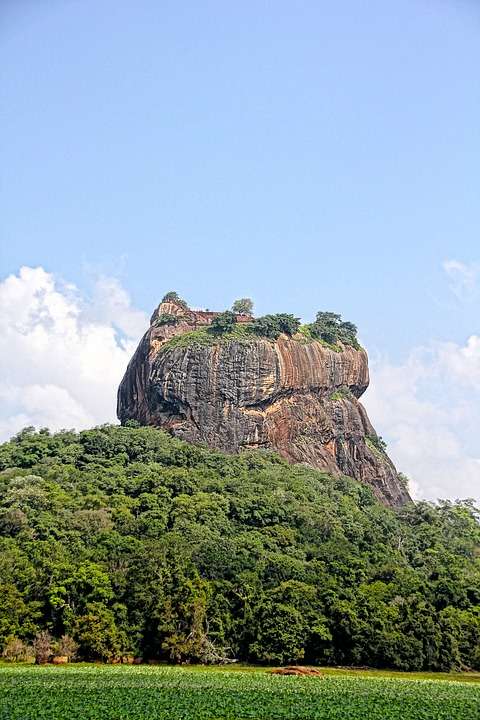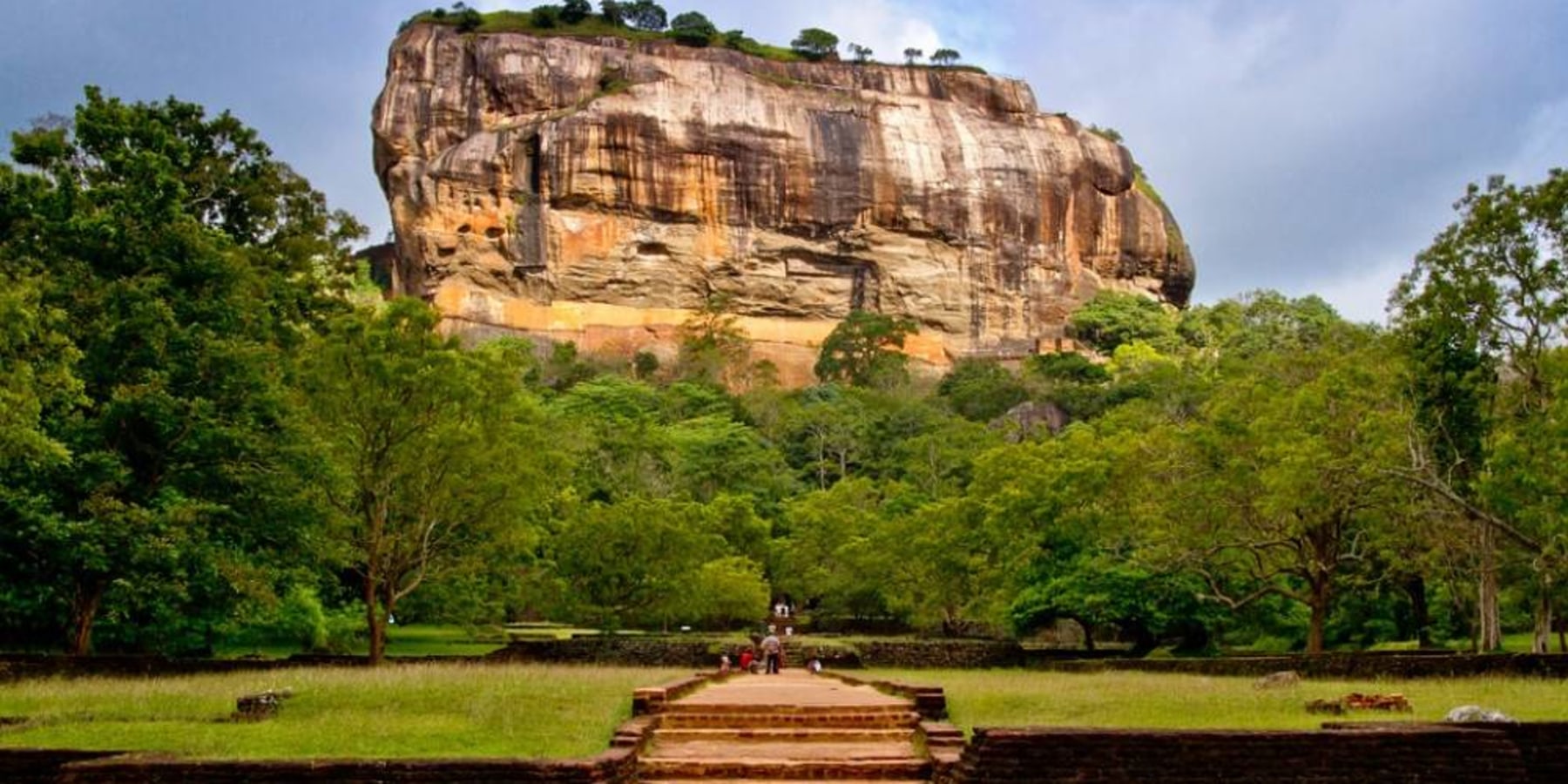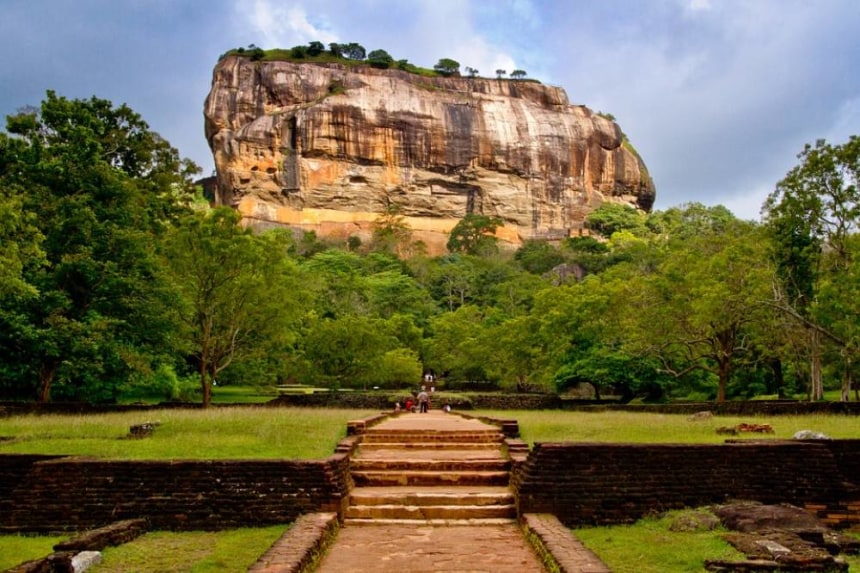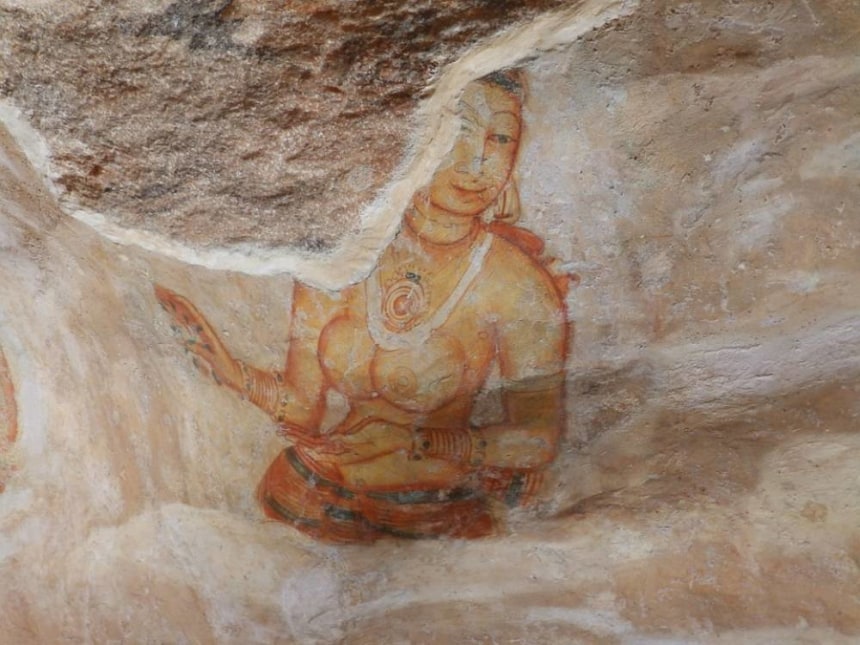
According to the Sri Lankan chronicles, Sigiriya was a fortress-palace built by King Kassapa.
In the late 5th century, Kassapa killed his father in a rebellion and fearing the revenge of his brother, abandoned Anuradhapura as his capital and built this fortress to protect himself. Nonetheless he ultimately committed suicide during a battle with the invading forces of his brother.
However a more recent school of thought suggests that Sigiriya was not a fortress or a palace, but a great Mahayana monastic complex, inscriptions dating 3rd century BCE, found in the caves surrounding the area, indicate the presence of ascetic monks, and it is possible that Sigiriya become a branch of the Abhayagiri Vihara and continued to function as a monastery for hundreds of year.
The Water Garden
These are a series of striking and elaborate pool, symmetrically place and fed by a complex system of underground pipes. Attesting to the ingenuity of the ancient hydraulic engineers, some of the fountain of the garden are still in working order. These garden, according to the traditional occunts, were the bathing place of the king's concubine who were drawn from many different races.
The Gallery of Maidens
Two of the main attraction of Sigiriya are reached climbing a spiral staircase built along the sheer cliff wall. The colourful frescoes of grateful ladies painted on the side of the rock are likely the most beautiful and well preserved of ancient Sri Lanka art. There are references to around 500 of these figures but only 22 of these remain. Some say they are Apsaras , or celestial nymphs, while other contend that they are Mahayana deities such as Tara and her attendants.

Just beyond the gallery is a wall covered with ancient graffiti which originally had an extraordinary mirror- like polish. Visitors from more than a thousand years ago wrote on the wall their impressions of their experience and thought on Sigiriya. There are more than 700 poems amongst this grafitti, many written in very neat and precise lettering.
The Lion staircase
On the large terrace near the top of the rock are two huge lion paws, the remains of an enormous lion - shaped entrance. Sigiriya takes its name from this brick lion, and visitors would have had to enter between its paws and climb up through its mouth to reach its peak. It is estimated that this structure rose to height of about 14 meters.
The Summit
The remains of the foundations at the summit shows that it was once covered with palaces, pavilions, halls and ponds. It is still unknown how the ancient engineers pumped water up the height of the rock. The plateau covers an area of about 16,000 square meters and offers magnificent views from all sides.
Particularly breathtaking is the bird's eye view of the water Gardens and surrounding pathways showing their precise and geometrical.
The Boulder Garden
On the way down are paths and stairways winding through clusters of large boulders and rocks. The striking feature of this garden is that many of these had a hall or pavilion cut into them. However the walls and columns of these Structures no longer exist. Fragments of paintings can still be seen in some of these shelters. Near the bottom is a tall and impressive rock that resembles a cobra about to strike.



